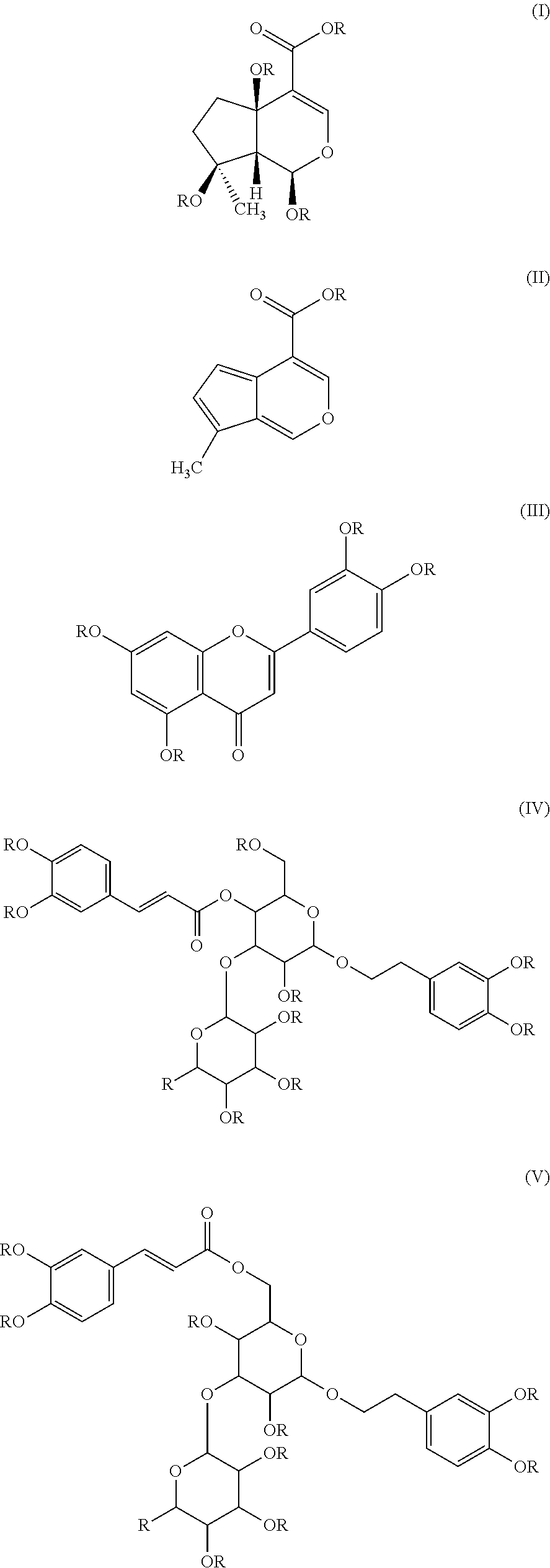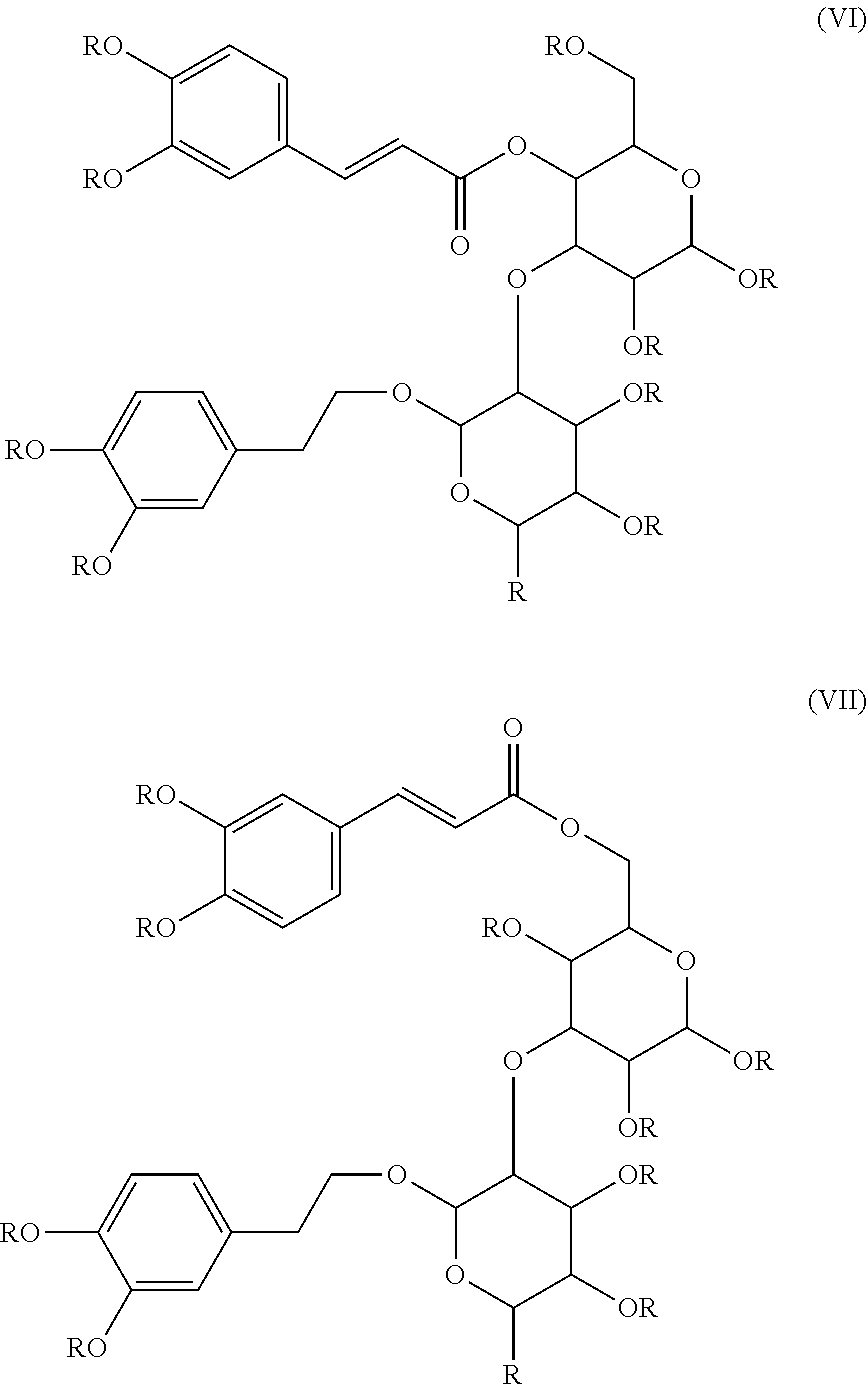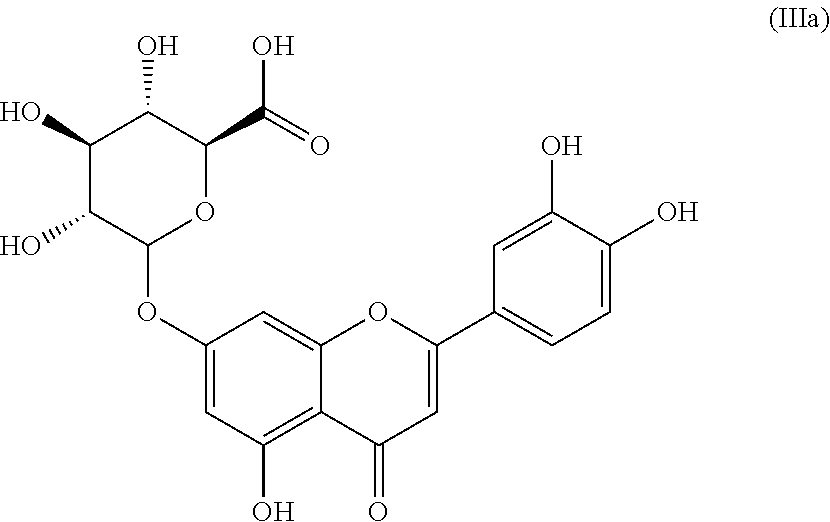Pharmaceutical composition on the basis of Stachytarpheta sp., a process for obtaining the same and its use for treating vitiligo
a technology of stachytarpheta and composition, applied in the direction of biocide, plant growth regulator, plant ingredients, etc., can solve the problems of insufficient treatment of vitiligo manifestation, diprosalic solution, toxic free radical accumulation, etc., to increase the feasibility of industrial production, increase the effect of size and easy finding in natur
- Summary
- Abstract
- Description
- Claims
- Application Information
AI Technical Summary
Benefits of technology
Problems solved by technology
Method used
Image
Examples
example 1
Methodology Used to Obtain Alcoholic Extract
[0069]In a bowl of an extractor equipped with mechanical agitation, add 100 Kg of leaves or aerial parts of the plant (of one of the three mentioned species), dried in ovens with controlled temperature of 60° C. and grounded in electrical mill Then, add 280 liters of ethanol at 96° GL, with frequent stirring, during 72 to 144 hours (2 to 4 days). After that process, filter the extract in vacuum through 100-μm filters. Using this methodology, a yield of approximately 240 liters of extract solution is obtained. After evaporation of the solvent in rotary evaporator with reduced pressure, a concentrated alcoholic extract is achieved, with the following results per plant, on average: 18% of Stachytarpheta cayensens; 16.5% of Stachytarpheta jamaicensis and 19.7% of Stachytarpheta eliotis.
example 2
Methodology Used to Obtain Hydroalcoholic Extract
[0070]To a stainless steel percolator, add 50 Kg of leaves or aerial parts of the plant (of one of the three mentioned species), dehydrated under shadow over stainless steel nets, during 24 hours. Then, add 80 liters of a hydroalcoholic solution (ethanol:water 1:1) and allow it to percolate for 8 days, with daily and occasional stirring. By the end of the period, filtrate the extract in 100-μm filters and concentrate it in rotary evaporator under reduced pressure. This methodology results in a yield of concentrated hydroalcoholic extract per plant in the following order: 15 to 21% of Stachytarpheta cayensensis; 17 to 20% of Stachytarpheta jamaicensis and 15 to 22% of Stachytarpheta eliotis.
example 3
Methodology Used to Obtain Aqueous Extract
[0071]To obtain the aqueous extract of one of the three Stachytarpheta species, add to a percolation bowl with controlled temperature 50 Kg of the leaves of previously selected aerial parts, dried under 65° C. in an oven with forced aeration and, then, ground it in an electric mill. Then, add 100 liters of distilled water to the bowl and heat it to 90° C. for 4 hours in a row. During that period, stir it occasionally. Then, filtrate it using 100-μm filters and, lastly, concentrate the extract (filtrate) in a rotary evaporator under reduced pressure. This extraction process results in the following yields: 7.4 to 11.2% of Stachytarpheta cayensensis; 6.5 to 8.9% of Stachytarpheta jamaicensis and 7.2 to 11.5% of Stachytarpheta eliotis in relation to the weight of the vegetable material used in the extraction process.
PUM
 Login to View More
Login to View More Abstract
Description
Claims
Application Information
 Login to View More
Login to View More - R&D
- Intellectual Property
- Life Sciences
- Materials
- Tech Scout
- Unparalleled Data Quality
- Higher Quality Content
- 60% Fewer Hallucinations
Browse by: Latest US Patents, China's latest patents, Technical Efficacy Thesaurus, Application Domain, Technology Topic, Popular Technical Reports.
© 2025 PatSnap. All rights reserved.Legal|Privacy policy|Modern Slavery Act Transparency Statement|Sitemap|About US| Contact US: help@patsnap.com



